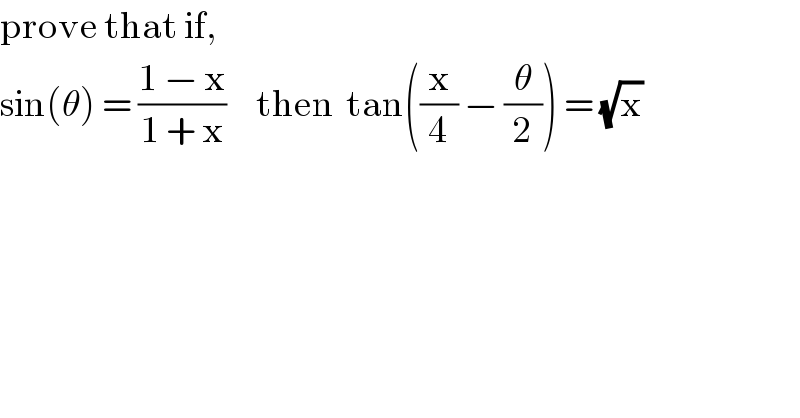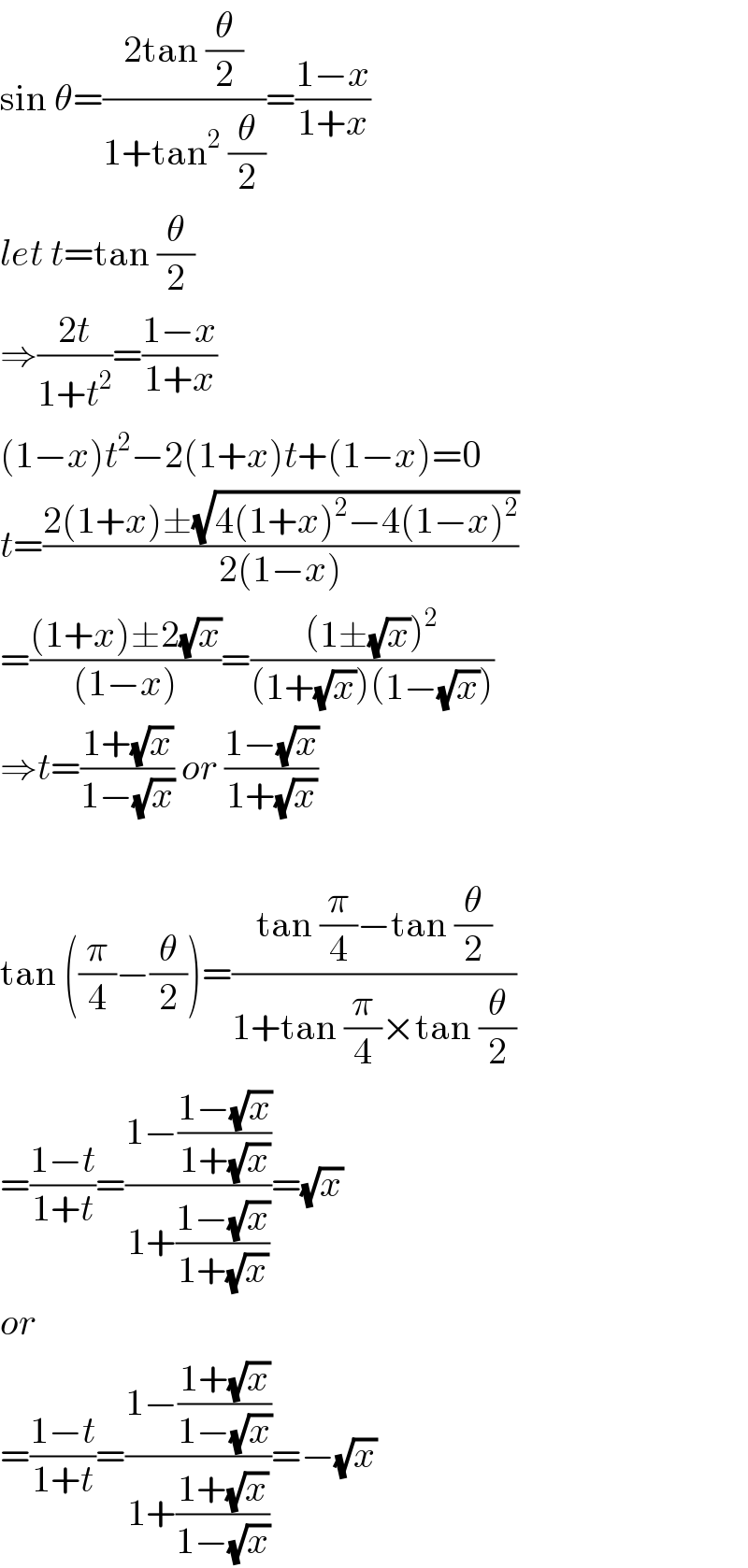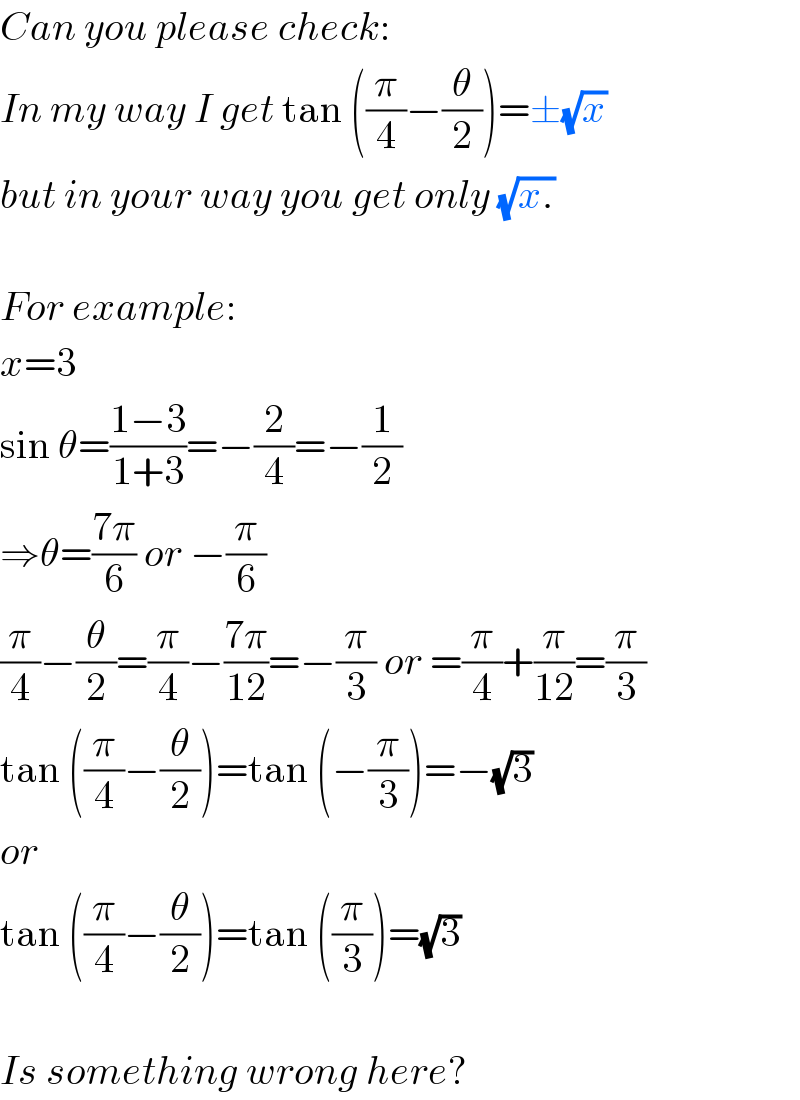
Question and Answers Forum
Question Number 12572 by tawa last updated on 25/Apr/17

Commented by mrW1 last updated on 26/Apr/17

Answered by mrW1 last updated on 26/Apr/17

Commented by tawa last updated on 26/Apr/17

Answered by ajfour last updated on 26/Apr/17
![tan ((π/4)−(θ/2))=((1−tan (θ/2))/(1+tan (θ/2))) sin θ=((2tan (θ/2))/(1+tan^2 (θ/2)))=((1−x)/(1+x)) =(p/q) (say) ((q−p)/(q+p)) =[((1−tan (θ/2))/(1+tan (θ/2)))]^2 =(((1+x)−(1−x))/((1+x)+(1−x))) ⇒ tan^2 ((π/4)−(θ/2))=((2x)/2) =x ⇒tan ((π/4)−(θ/2))=±(√x) .](Q12587.png)
Commented by mrW1 last updated on 26/Apr/17

Commented by ajfour last updated on 26/Apr/17

